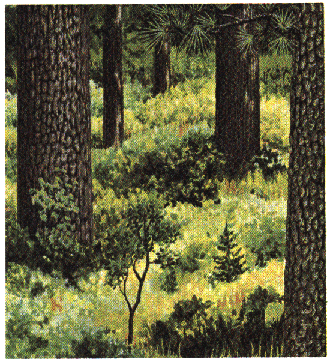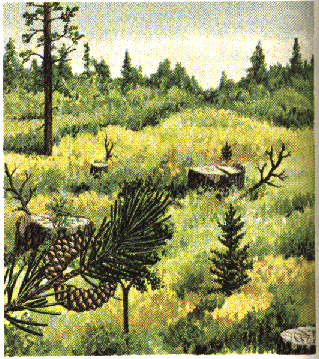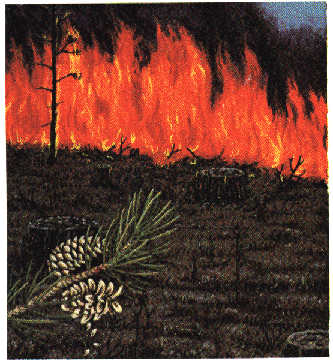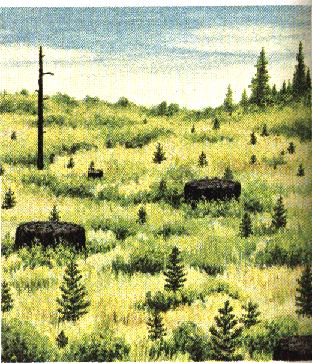Fire & Succession Worksheet
Great Lakes Transition Zone mixed (conifer
& deciduous) forest.

2a. Notice the large old growth jack pines with some smaller
plants on the ground. There are very few jack pine seedlings on the ground as
they can't survive shade.
The 4 pictures above and below represent a series of events that
occur in the transition area between the coniferous and mid-latitude deciduous
forests near the Great Lakes. In many places, much of the forest consists of
large pine trees with a few small trees and shrubs below as shown above. Jack
pines are the dominent conifer in the area. They begin producing cones when
they are about 8-10 years old and they do not live much over 100 years of age.
Their seedlings do not thrive in shade, so the jack pine would eventually be
replaced by a later successional stage of tree whose seedlings can survive shade.
However, early in the settlement of the region, Europeans brought
about a great change in the landscape (figures 2b-d).

2b. Settlers have cleared the forest for setting up their farms.
Note the clearcut in the foreground. As agriculture increased, they built log
cabins heated with the abundant wood they had cleared from the land.

2c. A human caused wild fire spreads over the landscape, burning
everything above ground.

2d. The next growing season begins. Grass and other pioneer
plants move in and grow in response to periodic fires, resprouting quickly after
a fire. A few jack pine seedlings have sprouted and grow quickly in the light
and with abundance of fresh fertilizer.
Slichter




